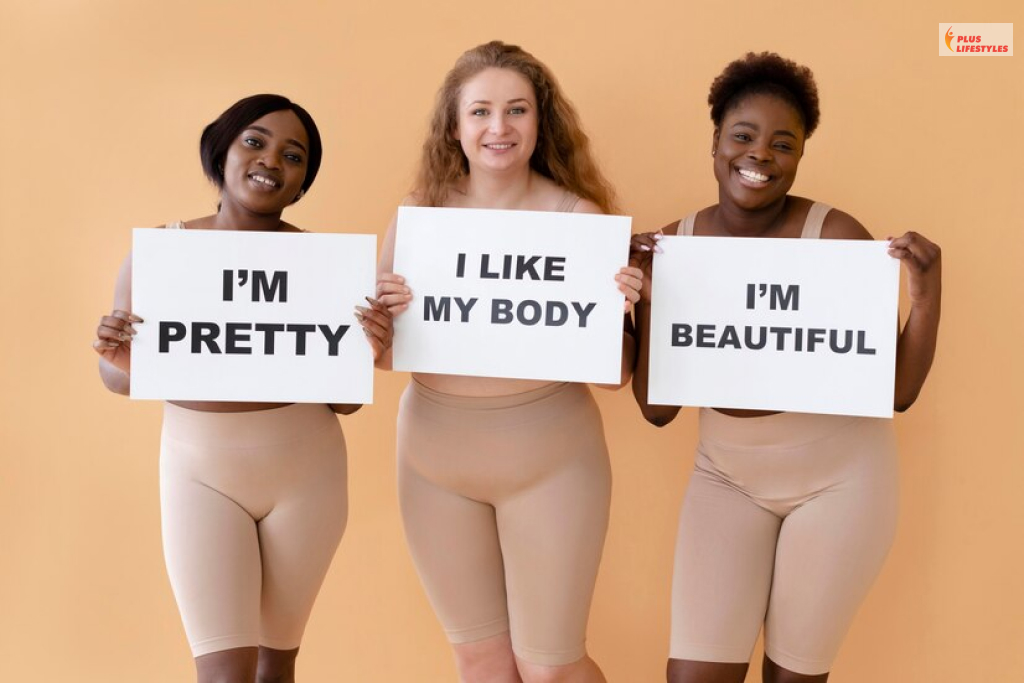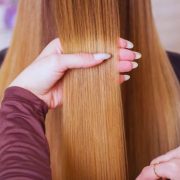“You need to shed some weight,” “Oh, look how chubby you’re getting,” “hey, are you surviving on air?”- raise your hands if you have heard any of them at least once in your lifetime.
We might be very vocal about acceptance and praise for inner beauty, but the truth is, the world can never stop talking about an imperfect body.
In a materialistic world, the definition of beauty is often associated with having a great figure. You are not even a subject of discussion if you are not 36-24-36 or if you don’t have a lean physique. But what has gotten wrong here?
In this article, we will examine body inclusivity statistics and what they really mean in 2024. So, let’s get started!
Understanding Body Inclusivity

To understand the depth of the topic, you must first know what body inclusion actually is. What do you think of the terms “diversity” or “inclusion?” They simply mean celebrating the uniqueness of every individual and counting them as one.
Well, body diversity is also no exception. It simply means celebrating every distinctive body, whether it is overshaped, has stretch marks, or comes in any color. Nowadays, body-positive fashion is extensively promoted owing to body-related concerns pouring in from all over the world.
But the sad part is that people fail to understand its true meaning even after so much awareness and consistent efforts toward body positivity. A study found that body-positive movements are contributing to obesity crises.
Inclusion of More Body Representation

5 out of every 10 women undergoing body changes turn out to be unhappy about their body type. Many researchers think that body dissatisfaction has a crucial role in addressing the gender difference and personal challenges of body issues.
There is a constant urge to look beautiful, especially in some industries. Movies and the fashion industry are too focused on having the right body shape. A whopping 90% of women tend to romanticize figures shown in movies and television shows, which leaves them utterly dissatisfied with their own body type.
Curvy Models
One of the most prevalent topics for discussion in the present media is curvy models. When we talk of body inclusivity, the first thing that comes to mind is plus-size. Brands like SummerSalt have done excellent jobs of including plus-sized models in their campaigns, and other brands are following suit.
Petite Figures
You are highly mistaken if you feel that only curvy bodies are subject to body shaming. Girls with a petite figure are equally involved. Dainty-figured women also have to go through body shaming, most likely by people who they know. Such body representations aren’t the problem; getting used to such comments is! And this is exactly what needs to be addressed right away.
Voluptuous Shapes
Women who have broad shoulders and are tall usually fall into this category. There are many comments about this particular figure, too, because, in an ideal world, women shouldn’t be taller than men. However, women belonging to this category said they had challenges accepting their body type and wearing clothes that do not flatter it.
Bulky Male Models
We love male models who are tall and dark with a lean physique. But what about those who have a hint of belly? Shouldn’t they be equally accepted in society? Well, the world might not be ready yet to do so, but various brands have already rolled up their sleeves to promote bulky men as models. One of the most recent and classic examples is Savage X Fenty, which featured plus-size models.
Body Image and the Role of Social Media

Gone are the days when television was the only source of entertainment. Long-legged, sleek models gave us goosebumps, forcing us to turn into them. Now, social media is doing a larger part of that job. With people of all ages actively seeking the definition of perfect body types, social media actually has a lot of influence on our perception of body type.
It sets unrealistic beauty standards…
Instagram and Facebook are full of influencers who have flawless skin and an hourglass figure. But beyond what we see is a world of filters and photo editing. Everything looks aesthetic through that small window, but the real world is very different from what is shown.
Unrealistic beauty standards create a sense of dissatisfaction among users, both men and women. They start blaming their environment because there’s a constant urge to upgrade. In 2018, a research was conducted where plastic surgeons shared how their clients wanted to look like a certain Snapchat figure.
Too much competition and comparison…
The toxic culture of social media is another way of increasing competition and comparison. Individuals tend to compare themselves with influencers without failing to understand that the latter undergo various body changes. To have that “perfect” body, celebs and influencers undergo various surgeries.
Whatever people post on social media isn’t how they actually look like. Yet, they succeed in influencing the users, and they jump into the rat race. Both women and men are equal contributors to negative body image, which eventually affects mental health, too.
Hate spread on the Internet…
Social media is one of those places where it’s very easy to sit in the comfort of your house and spread negativity across the world. Initially, the purpose of this social networking platform was to assess conversations with our loved ones staying far away. But the meaning has completely changed now.
Cyberbullying is very common, and it does not even spare celebrities. Common people who are not “ideally” healthy, body-wise, have to face a lot of backlash, which eventually brings down their morality. They become less social, and a fear of judgment always surrounds them.
How To Become More Body-Inclusive?

It is true that size-inclusive clothing is the initial point towards accepting body diversity. But that’s not all! If you are looking forward to how to become more body-inclusive, here’s a brief idea:
Start following people with diverse bodies
Only a handful of influencers promote the most organic social beauty norms. Without thinking about trends, these social media people pave the way for body inclusivity. All you have to do is start searching for such accounts and following them.
Seeing positive is doing positive. Surround yourself with good posts that recognize everybody as a unique type. Since we are very much into socials nowadays, a great start is to follow the right people. Teenagers are likely to develop a positive mindset when they are not into trolling but embracing all body types.
Exchange compliments which are personality-centric
The cover doesn’t matter; what’s inside of the book does. Stop focusing on the material definition of beauty our brains have been fed so far and instead compliment someone based on their personality. Avoiding appearance-based discussions makes the environment around you more welcoming and supportive.
Of course, complimenting someone on their new hairstyle or the cute outfit they are wearing isn’t wrong. In fact, you must do it once in a while. But what I want to say is to focus more on what’s inside, such as how good they are in their studies, how competitive they are as colleagues, etc.
Lead towards a positive approach
Often, people in important positions forget about the motive why they are where they are. If you are one of them, make sure to lead in a positive direction. Try to bring in more inclusive fashion designers who know how to turn any figure, color, or skin into mesmerizing beauty.
I believe the fashion world has a big influence on the minds of people. So, if the source is optimistic, I think most of the problems will eventually be solved. Educate people around you on how to become more accepting of different body types and how to work with them in a cooperative environment.
Be more accepting of yourself
Nothing truly matters unless we change our perception of ourselves. The aesthetically pleasing world of social media can easily impact minds, but we need to be rational. The world we thrive in already has a lot of competition; we don’t need to add more to it.
Instead of comparison or competition, we can start accepting our own body types. If we preach to people around us to embrace their curves or dainty figures, the world will grow more towards acceptance. There is no such thing as having the “perfect” body, and the world needs to understand this!
Concluding Words
Men also have to go through various body shaming comments, and nothing makes it easier for them. Body inclusivity actually has a lot to do with the mental health more than the physical health. Unless we start embracing the change within, nothing can make us feel better about things outside us.
People age, bodies sag, and the glow sheds off—that’s the reality of every human life. What mainstream media and social media show is the hollow truth of people; they are unnaturally fake. Now is the perfect time to begin with body diversity, and every single individual can work towards the cause!
Continue Reading:

















